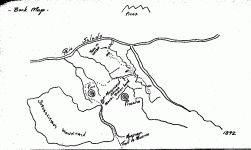Azquester
Bronze Member
- Joined
- Dec 15, 2006
- Messages
- 1,736
- Reaction score
- 2,600
- Golden Thread
- 0
- Primary Interest:
- All Treasure Hunting
You don't pass up oz's of gold. At least I don't. You hit a hot spot you work it. All this takes time. Gold is gold. You can dry pan with a gold pan. There is a good video on YouTube showing you how. I use a Garret supersluice pan for dry panning
Franks right. The thing that's not being told here is where and how. During floods and erosion over decades or centuries the gold gets washed down from it's source and scattered over a vast area. The only thing that stops this process is the glue that grabs gold and holds it. That glue is certain types of clay. When you dry wash an area searching for gold you only go down to the clay level of the landscape. Then you scrape the clay at that level. Usually only about 6-12 inches deep. Gold concentrates in may ways but this is the method for dry washing I was taught by the old timers in my club. And I've found quite a lot of gold using this method. Gold in stream beds are a different animal. Streams are hard to predict. The best method for prospecting a stream I've found is simply panning every 50 feet or so and looking for "Colors". With stream gold being scattered by floods it usually isn't to far from the source whether it be a mine an old arrastra site or placer. I look for black sand layers in the sides of the streams or places where the stream fans out level.
But gold is where you find it.
Also for as much work as it takes sometimes to get gold the metal itself is lazy. It takes the paths of least resistance like the center of a stream or the inside corners. That's heavy stream gold. Flood gold is different. I've found flood gold embedded in rock outcrops. In the side of the banks with my gold bug 2.
And also on the outside swing of a curve. Flood gold has a hard time stopping it's usually flat shaped so the water moves it easy and it drops into the bed rock banks with out effort.
Last edited:







